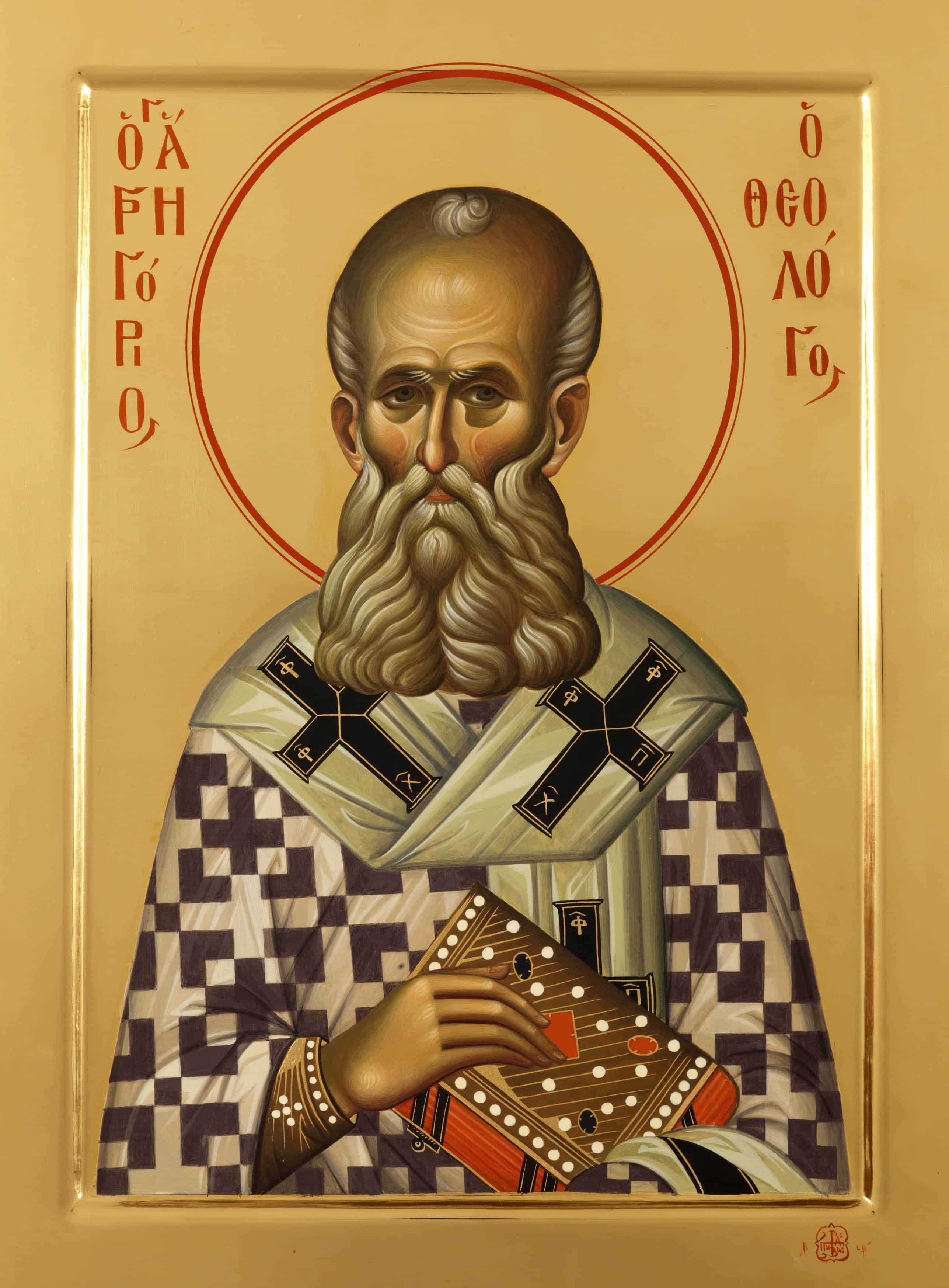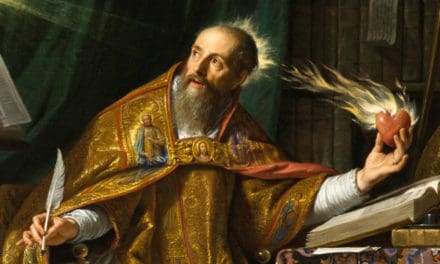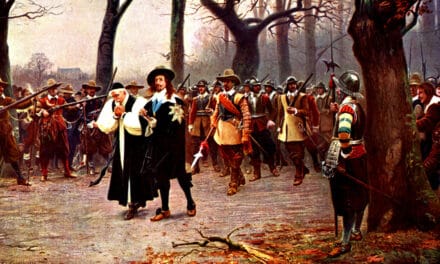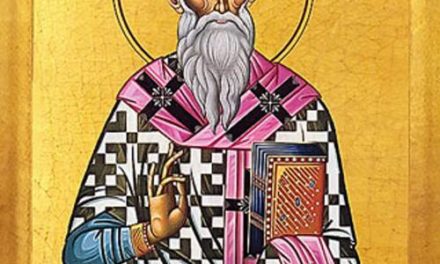This is part 5 of our series on the Creeds in which we’ll be taking a look at the First Council of Constantinople.
In Part 3 we looked at the First Council of Nicaea in 325. While the Church had a lot to deal with in the decades that followed, they didn’t convene another Council for almost 60 yrs.
And before we dive into that Second Council, we need to back up a bit because it can get confusing keeping track of all these councils and how they relate to the Creeds.
Both the Roman Catholic & Eastern Orthodox Church recognize what’s called the First Seven Ecumenical Councils. Don’t be confused by that word “Ecumenical.” Today, the word carries the connotation of bringing together disparate groups. But as it’s applied to these Councils, Ecumenical meant that church leaders from every region and branch of the Faith were invited and a part. There were other councils that took place after the 7th, but it’s only these both the Western & Eastern churches recognize as legit.
It ought to be noted that the Oriental Orthodox church only accepts the first three councils, while the Nestorian Church of the East only accepts the first two.
And to complicate matters just a bit more, there was a council between the 6th & 7th called the Quinisext Council that the Eastern Orthodox Church accepts as legit while Rome does not. The reason this Council isn’t given an ordinal number like the rest is because it didn’t deal with any issues of theology. It dealt with more liturgical & organizational issues not resolved at the 6th Council, so was considered to be an extension of that Council.
While Rome ignores the Quinisext Council & the Eastern Orthodox Church only recognizes the first 7, Rome embraces later councils the Eastern Church does not.
Alright, with that out of the way, let’s turn now to the Second Ecumenical Council, the First Council of Constantinople.
As you’ll remember from a couple episodes ago, the Council of Nicaea in 325 addressed the challenge of Arianism and the identity of Christ. They settled on the wording for their Creed, that Jesus was “very God of very God.” Contrary to what the heretic Arius taught, Christ wasn’t a created being God then used to create everything.
Certain modern authors & New Age spiritualists would have us believe the Emperor Constantine manipulated the Council to this end for some sinister political ambition, then by royal fiat waved his scepter and Christianized the empire, enforcing his decree with the sword and made Arian believers conform. But as we saw, that’s just not the case; not by a mile! The fact is, the problem of Arianism remained, with over the next decades Roman emperors favoring a form of Arianism. It was they who persecuted Nicaean Christians, not the other way around.
When 80 priests petitioned Emperor Valens, a rabid Arian supporter, to reconsider an appointment he’d made that was highly a controversial, he rounded them up, put them in a boat, launched it from the shore and then had burning arrows shot into it so that they all burned to death.
Yeah, so that whole “Constantine MADE Christianity the only acceptable religion” line so many love to repeat, just doesn’t hold up.
By 381, while orthodox Nicaean Christians didn’t face the same kind of persecution they had under some of the emperors before Constantine, they were still caught up in a struggle for their faith; this time with people who claimed their Arianism was the truth Faith; “and we’ve got the Emperor on our side.”
We might think the Nicaean Council & Creed dealt the death blow to Arianism. It didn’t because Arians finagled a way to conform to Nicaea without giving away their key ideas.
Arius had taught that Christ was a created being. Some Arians, called Semi-Arians, claimed Christ was like God. They appealed to some old language the church had used to answer the objections of those who said there was no difference between the Father & the Son. That was answered by saying Christ is “like God,” meaning the Father. He’s LIKE the Father, but Isn’t the Father; they’re two persons.
That language, which had been accepted by earlier Christians, was picked up by the Semi-Arians, who’d become the new standard bearers for Arianism. They said, “Look, we’re only saying what earlier Christians said.” You can’t condemn us without condemning them too.” But of course, they applied the phrase “like God” to a completely different application. They weren’t saying the same thing as those earlier Christians.
At first, the orthodox Nicaean Church Leaders showed the Semi-Arians grace & accepted them as orthodox believers. But it didn’t take long before the true colors of the Arians came out. What outed them was their position on the Holy Spirit.
Nicaea hadn’t said much about the Spirit; only that the Orthodox believe in Him as a member of the Trinity. But the super precise verbiage that had marked their identification of Christ was absent. Arians on the other hand, clinging tenaciously to a single person as God, said the Holy Spirit was merely an impersonal force & spiritual influence. The orthodox understood the Biblical teaching that the Holy Spirit is a person, co-equal with the Father & Son. They regarded the Holy Spirit as Third Person of the Trinity. So, another council was called after the death of the Arian Emperor Valens to settle the issue.
To be fair, let’s give the Arians some ground to stand on to present their case for why the Holy Spirit is to be regarded as a force rather than divine person.
Joel 2:28, quoted in Acts 2 has God promising: “I will pour out my Spirit on all people.” How can a person be poured out?
In Psa 51, David asked God to not take the Holy Spirit from him. That seems to say the Spirit is something that God uses rather than a person who acts. In the NT, the Spirit sometimes seems to be described as a state of being; like when the disciples are filled with the Spirit & the Spirit can be quenched. The Arians maintained that if such passages referred to a person, it was unlike any other person we’ve encountered, to the point where what it means to BE a person has to be altered.
The Arians then looked outside of Scripture to the way the Holy Spirit was spoken of in some Church traditions and rituals. Often times the wording of such applied better to a power or force than a person.
For example, a 3rd C liturgy spoke of the church as a “place where the Spirit abounds.” That kind of language was just never used for the Father & Son.
Another reason the Arians managed to get away with all this for a while is because, to be frank, the Church didn’t possess a full-orbed, well rounded and thoroughly Biblical theology for the Holy Spirit yet. It was this controversy that helped develop it.
That came when orthodox Church leaders went to Scripture to see what it taught about the Holy Spirit. While there were verses that could be understood as referring to an impersonal Spirit, Gregory of Nazianzus found many more passages cast the Spirit is Personal terms that could NOT be connected to a mere force or power. A greater thing can do a lesser, but a lesser thing cannot do a greater. A person can do something a mere power or force can do. But a mere force cannot do what only a person can.
So the Bible said the Holy Spirit can be grieved, lied to, can speak, consoles.
And if the Arians wanted to appeal to long-standing church rituals as back up for their position, what about the fact that since the beginning, new believers were baptized in the name of the Father, Son, and Holy Spirit?
During the discussion of the First Council of Constantinople, orthodox Church Leaders were concerned the Arian doctrine of the Spirit undercut God’s promise to personally dwell in and with His people. He didn’t send a force, He came Himself in the Person of the Spirit. The Christian Life isn’t merely one that’s given some extra juice by the impartation at baptism of a dose of spiritual energy, as Arians claimed. The Christian Life is nothing less than, as Paul said in Gal 2:20, Christ himself living IN and through us by the person and presence of the Holy Spirit.
When it was clear to Church Leaders Arianism had resurged and threatened to once again co-opt the faith, they convened a Council in early 381. They asked Emperor Theodosius to send out official invitations, summoning church leaders. Though Western Church leader did NOT attend the Council, they accepted it’s conclusions as though they’d been present and participated in ratifying its conclusions. The Emperor recused himself from any part in the Council and left it to the bishops to settle the matter among themselves.
Meletius of Antioch was selected to preside at the Council, but died shortly after it was called. Gregory of Nazianzus, the recently installed Patriarch of Constantinople took his place. Gregory, as one of the Cappadocian Fathers, was a scholar’s scholar. He was also a committed Orthodox Nicaean. Because Arianism prevailed in the East for decades before Theodosius’s rule, the Patriarchate of Constantinople had been filled by Arians. Gregory was something utterly new.
He was also exhausted by the time the Council began. Finding himself suddenly thrust in the role of presiding over it, he regarded the political squabbling over appointing a replacement for Meletius at the important bishopric of Antioch too much & resigned. Theodosius was loath to grant him his request, but was persuaded by Gregory’s impassioned appeal and released him. The Council was then lead by Nectarius, an unbaptized civil official.
Unlike some later Councils, this one was mostly free of political pressure and focused on theological issues, both sides being well represented. The decision of the Council favored the position of the orthodox which had been carefully crafted by Gregory of Nazianzus. Instead of coming up with a new Creed, the Nicene Creed was clarified and expanded to say, “I believe in the Holy Ghost, the Lord, the Giver of Life, who proceeds from the Father, who with the Father and the Son is worshiped and glorified, who has spoken through the prophets.”
Now: Put a little mental footnote in here because we’ll come back to this in a later episode. The Western church added a few more words to this later. That addition was never accepted by the East and became a major point of contention that goes on to this day.
This Constantinoplian-revised Nicaean Creed left not a millimeter’s worth of wiggle room for Arians. The Holy Spirit was now clearly identified as a divine person who fulfills a role that God reserved for Himself. He’s the Giver of Life, both physical and spiritual, intimately connected with the Father and not a separate deity, who deserves to be the object of worship, and who’s been active in the process of salvation throughout history.
This Council put the last theological nail in Arianism’s coffin. It was now officially banned.
Updating the Nicaean Creed wasn’t all the Council did. They also condemned as heresy the doctrine of Apollinarianism, which denied the dual nature of Christ, attributing only a divine nature to Him.
The Council also granted the Imperial Church at Constantinople an honorary primacy over all other churches, except Rome. Coming as the 3rd Canon, or ruling of the Council it reads, “The Bishop of Constantinople, however, shall have the prerogative of honor after the Bishop of Rome because Constantinople is New Rome.”
Remember, Western bishops weren’t present at Constantinople. This canon was a first step in the rising importance of the just 50 year old new capital. What’s remarkable is that by elevating Constantinople, it demoted older churches that figured far more centrally in the early history of Christianity. What about Jerusalem, Antioch and Alexandria? In fact, that was the push back that Rome gave. While the Roman Church would go on later and use this canon to assert its supremacy over other churches, they protested the diminished statues of the other traditional church centers.





